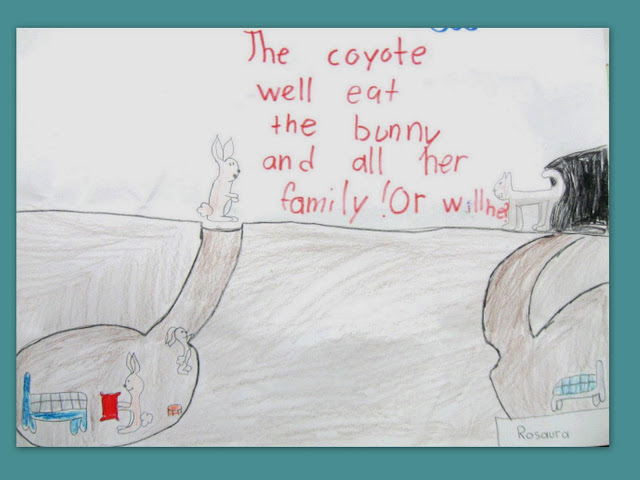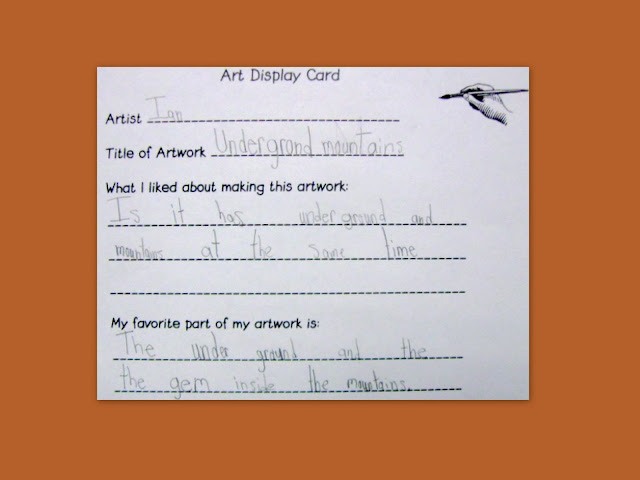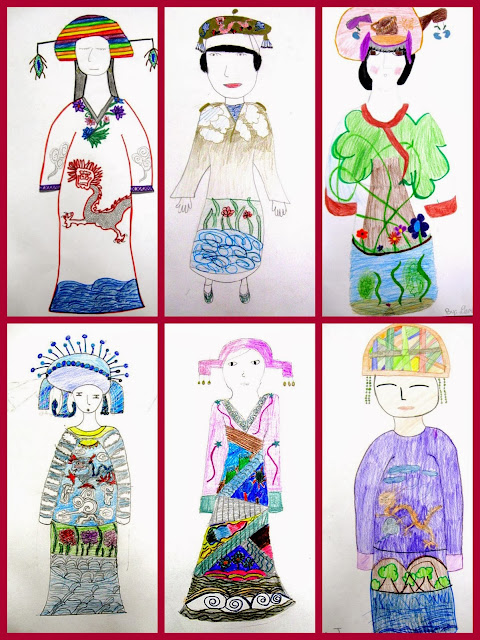


Pop -ups have such an enduring fascination. The techniques we used here are not complex, but the transformation from two dimensions to three almost seems magical.
We used index cards and regular scissors. First, everyone made all 7 of the pop-ups shown below (just to get the hang of it). The ones you see above were new designs created by the students.
 |
| Fold index card in half vertically or horizontally. Cut where you see a dash line and crease where you see a solid line. It's important to crease in both directions to really "set" the crease. We used the handle of the scissors to smooth the crease. Open the card and just play with it a bit to get the pop-up. |


















